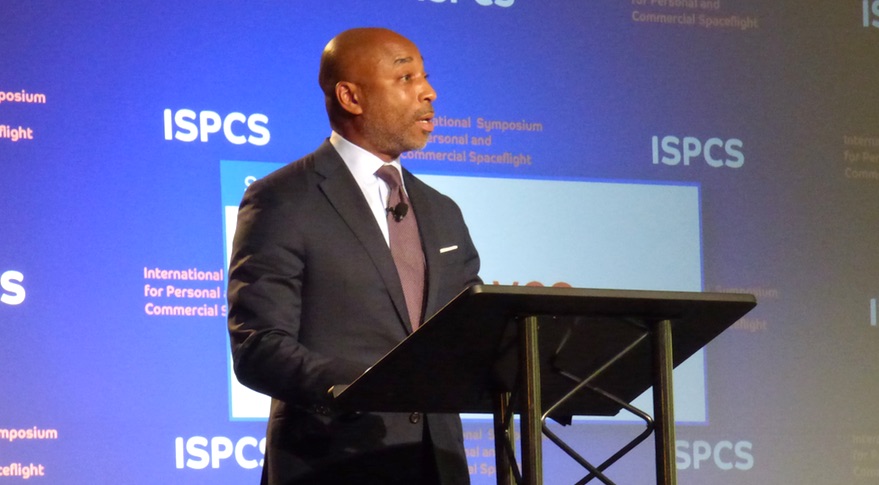
WASHINGTON — The fiscal year 2023 omnibus spending bill provides two agencies with much, but not all, of the budget increases they requested to take on new or expanding commercial space work.
The omnibus spending bill released by Congressional appropriators included $70 million for the Office of Space Commerce, located within the National Oceanic and Atmospheric Administration in the Commerce Department. The administration requested $87 million for the office in its budget request in March.
That amount, though, is still far above the $16 million the office received in fiscal year 2022. The office sought a large increase to ramp up development of a civil space traffic management system. That funding would go towards hiring staff and establishing an open architecture data repository, or OADR, that would aggregate space situational awareness data from multiple sources that would be used to provide warnings of potential conjunctions.
The report accompanying the omnibus did not provide any specific direction on the office’s activities, beyond providing a detailed spending plan and a five-year strategic plan for the office.
Another part of the omnibus, funding the Federal Aviation Administration, included $37.854 million for its Office of Commercial Space Transportation. The office, which received $32.47 million in fiscal year 2022, requested $42.5 million for 2023.
The FAA sought the increase for the office in order to hire more staff to keep up with a growing pace of commercial launch and reentry activities that it licenses. That growth in commercial activity, including companies applying for new launch licenses, was straining the office.
“The number of applicants is at an all-time high. We are processing applications for new activities, modifications, waiver requests, you name it, we’re in the business of working that, all simultaneously, with a limited number of staff,” Kelvin Coleman, FAA associate administrator for commercial space transportation, said at a Dec. 15 meeting of the Commercial Space Transportation Advisory Committee (COMSTAC). “That’s become more challenging.”
He said at the meeting he hoped the fiscal year 2023 budget would provide the increase the FAA sought to allow the office to hire more personnel. “We certainly do not want to be, and don’t intend to be, the bottleneck” for the commercial spaceflight industry, he said.
The office was preparing to prioritize work given limited resources, putting some unspecified activities into a queue. “We certainly can’t work everything simultaneously, given the staff we have,” he told COMSTAC, because of concerns that doing too much at one would overstretch staff and lead to safety lapses.
The report accompanying the bill directed the FAA to hire up to 40 more people for the office with the additional funding. It also requested a report within 90 days on efforts to integrate commercial space operations into the national airspace system, data on delays to commercial aviation caused by commercial spaceflight activities and an evaluation of the impact of commercial spaceflight on the environment and communities.
In addition to the operational funding for the FAA commercial space transportation office, the omnibus bill includes $5 million to support commercial space integration airspace research and development and $4.7 million for commercial space transportation safety work.
Weather satellite funding cut
Elsewhere in the NOAA section of the omnibus bill, appropriators cut requested funding for the agency’s next-generation geostationary weather satellite effort, called Geostationary Extended Operations or GeoXO. NOAA requested $653.8 million for GeoXO to complete Phase A formulation studies for two instruments planned for those satellites, an imager and a sounder, and start Phase A work on the remaining instruments and the spacecraft.
The omnibus, though, included less than half that amount, $285 million. Appropriators said the funding will be sufficient to complete the current formulation studies on schedule and award a development contract for the imager. It called on NOAA to provide a report on user needs and requirements for those next-generation satellites and lifecycle cost estimates for those satellites.
Other weather satellite programs received their requested funding with the exception of Polar Weather Satellite, which covers future polar-orbiting weather satellites. NOAA requested $350.2 million for the program but the omnibus provided $180.5 million. The report accompanying the omnibus did not explain the funding cut.
- SEO Powered Content & PR Distribution. Get Amplified Today.
- Platoblockchain. Web3 Metaverse Intelligence. Knowledge Amplified. Access Here.
- Source: https://spacenews.com/omnibus-includes-budget-increases-for-office-of-space-commerce-and-faa-commercial-space-office/



